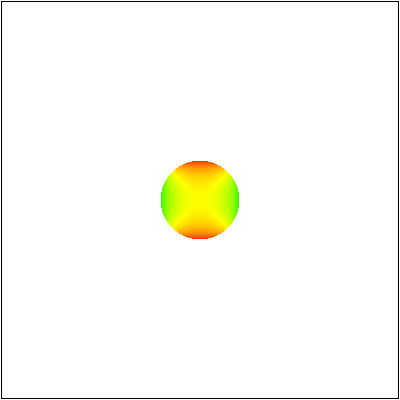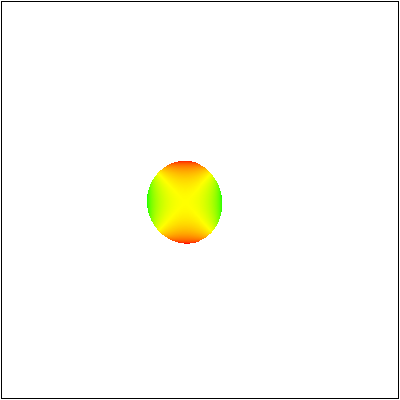
Figure:
Deformation and Magnification Effects


|
Explanation of the figure:
The left figure presents an unlensed source (rainbow-colored), which would be
observed without the gravitational lens effect, and a lens object (a small point)
which is moving from right to left. The right figure does the images of the source,
which we can observe and the lens. In this figure the lens object is assumed to
be a point mass. It is known that this lens model is expected to produce two images.
In the right figure, it is the primary image (larger image) which is changing its shape
near the center of the figure. The secondary image (smaller image) is the one which is
accompanied by the lens object.
Deformation effect:
The gravitational lensing effect depends on the distance between the lens
and a point on the source projected on the lens plane. The light-path which passes
near the lens is bending more than one far from the lens. Therefore, the part of
the projected source closer to the lens is observed as a strongly distorted part
of the image. As a result, the images are deformed by the lens effect. This effect
is the ``Deformation effect".
Magnification effect:
The area of the images in the right figure differs from the area of the unlensed source
in the left figure. It is known that, in general, the unlensed source is smaller than
the primary image, but larger than the secondary image in the point mass model. Furthermore,
Since the flux density in light-bundle on the lens plane has nothing to do with the
gravitational lens effect, we can expect that the larger image is, the brighter image we observe.
Therefore, the primary image is brighter than the unlensed source, and the secondary image
is fainter than the source. (We should not forget that the unlensed source is invisible.)
This is the ``Magnification effect".
yoshidah
Fri May 26, 2006

